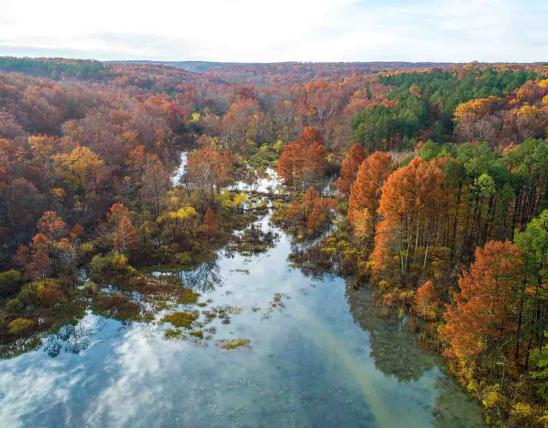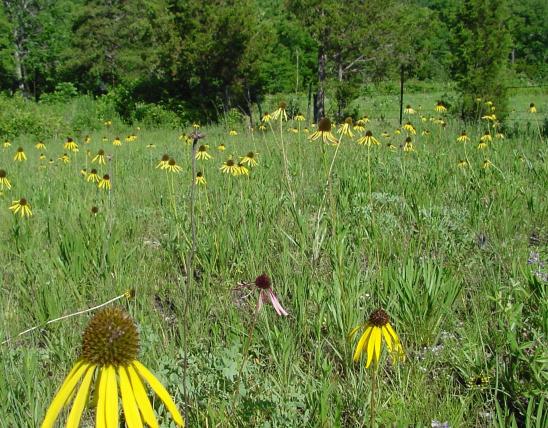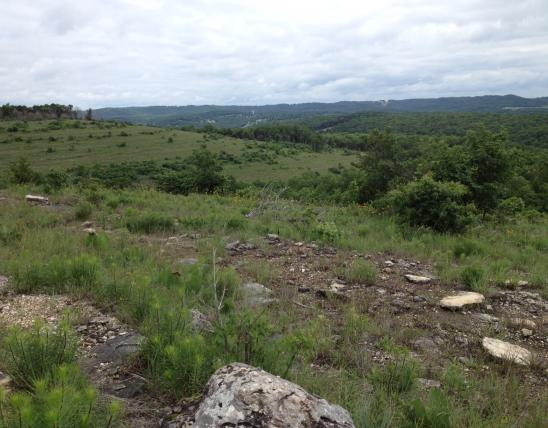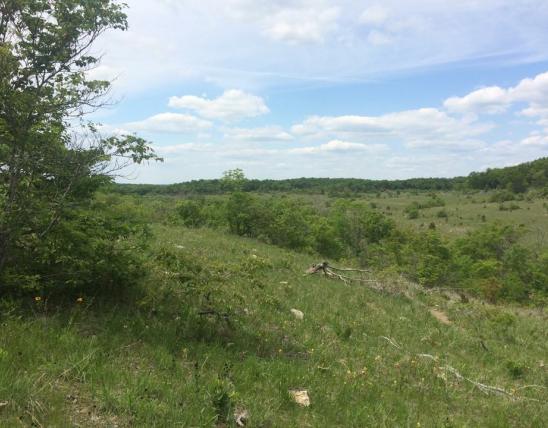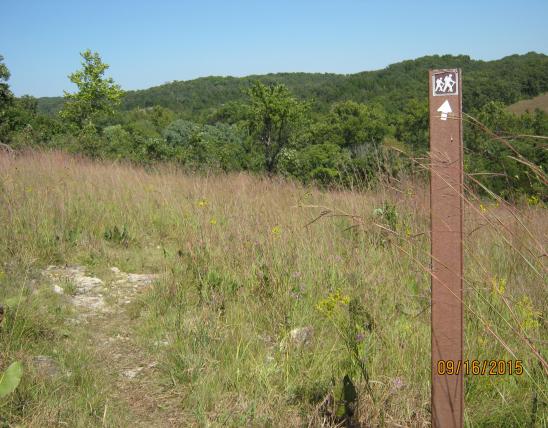Indian Trail Conservation Area covers 13,503 acres in northeast Dent County, between Salem and Steelville. The entrance to the area is off Highway 19.
Media
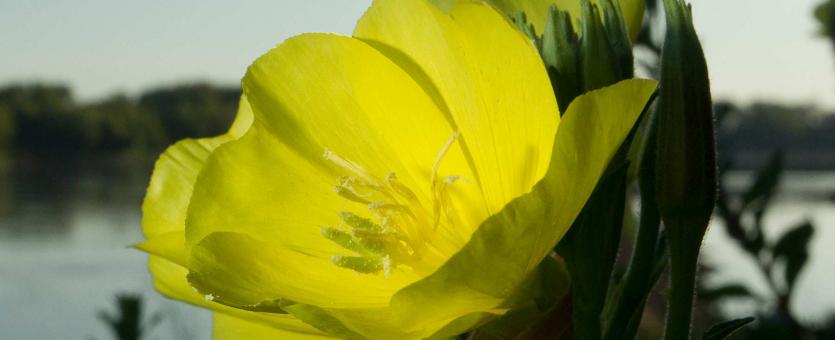
Scientific Name
Oenothera macrocarpa (formerly O. missouriensis)
Family
Onagraceae (evening primroses)
Description
Missouri evening primrose is a sprawling herbaceous perennial with multiple stems that trail along the ground. Often seen festooning the tops of bluffs and rocky road cuts. Blooms May through August. Flowers are solitary, very large (up to 4 inches wide), 4-petaled, and bright lemon yellow. Often there are many blooming at once, making this a very showy plant. The flowers last only a day, usually opening in late afternoon and staying open until the next morning. Leaves are narrow and lance-shaped.
Size
Height: to 12 inches; spreads to cover 2 feet in diameter.
Where To Find
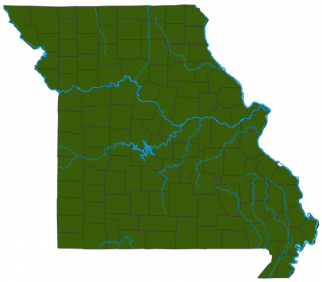
Statewide, but especially in the Ozarks south of the Missouri River. Cultivated statewide.
Habitat and Conservation
Usually found on limestone glades, bluffs, and rocky prairies in the Ozarks, but this favorite hardy native wildflower is also a popular plant for gardening and in roadside beautification projects.
Status
Common. This species was formerly called Oenothera missouriensis, and some sources still use that name.
Human Connections
Missouri evening primrose is a favorite garden plant, particularly in sunny rock gardens, borders, and meadows, where it requires little care. It doesn't do as well in wet and poorly drained soils.
Ecosystem Connections
Flowers that open at night are usually pollinated by night-feeding bees and moths, and thus supply nourishment to those species. Some moth caterpillars feed on evening primroses as a main food plant as well.
Title
Media Gallery
Image
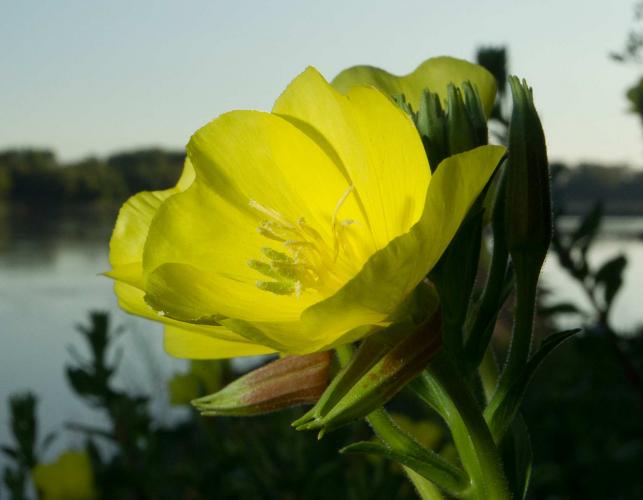
Credit
Noppadol Paothong
Right to Use
Image
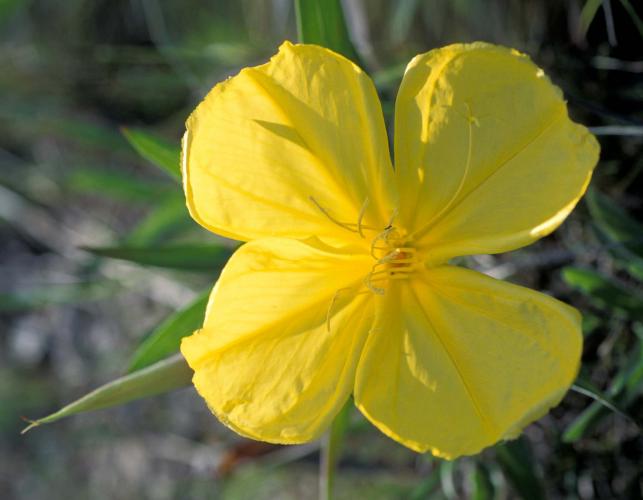
Right to Use
Image
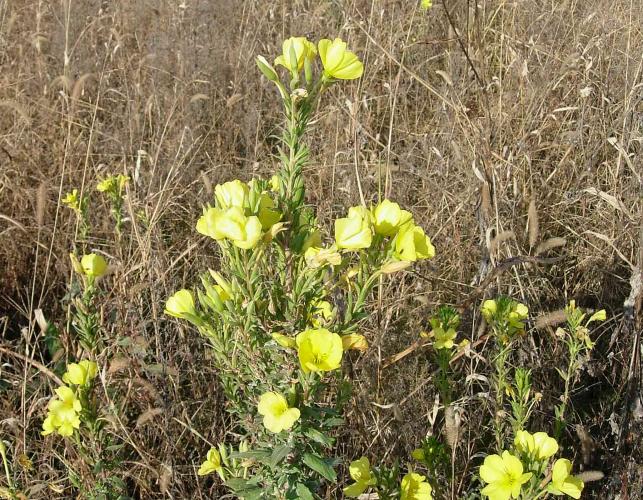
Right to Use
Image
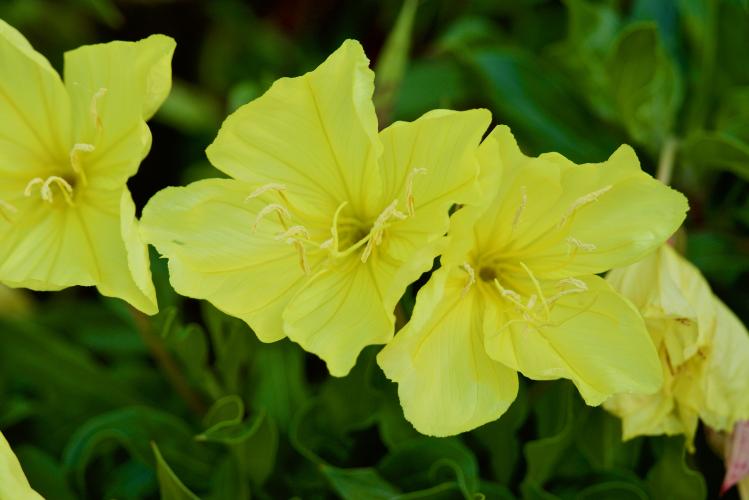
Credit
Submitted by Bev Danis
Right to Use
Image
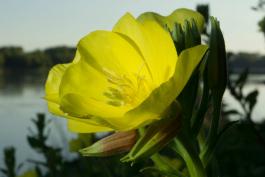
Image
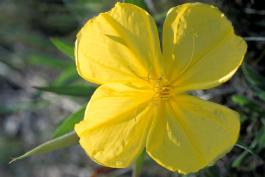
Image
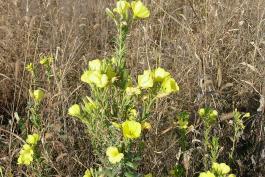
Image
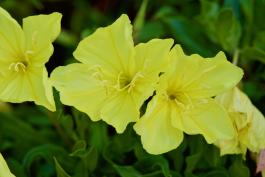
Title
Similar Species
Where to See Species
Sentinel Conservation Area is in Polk County. Sentinel Conservation Area was acquired in part through the Pittman-Robertson Wildlife Restoration Act administered by the U.S.
Ruth and Paul Henning Conservation Area is in the White River Hills of western Taney County on the west side of Branson.
At Valley View Glades Natural Area, you're only a few steps away from a spectacular view! Just a short stroll from the parking lot brings you through a wooded corridor and to a breathtaking vista.
Be prepared for a little bit of everything when you visit Victoria Glades. You'll encounter yawning, open glade vistas, oak-hickory forest, intermittent streams and an incredible sunrise view.
About Wildflowers, Grasses and Other Nonwoody Plants in Missouri
A very simple way of thinking about the green world is to divide the vascular plants into two groups: woody and nonwoody (or herbaceous). But this is an artificial division; many plant families include some species that are woody and some that are not. The diversity of nonwoody vascular plants is staggering! Think of all the ferns, grasses, sedges, lilies, peas, sunflowers, nightshades, milkweeds, mustards, mints, and mallows — weeds and wildflowers — and many more!






















